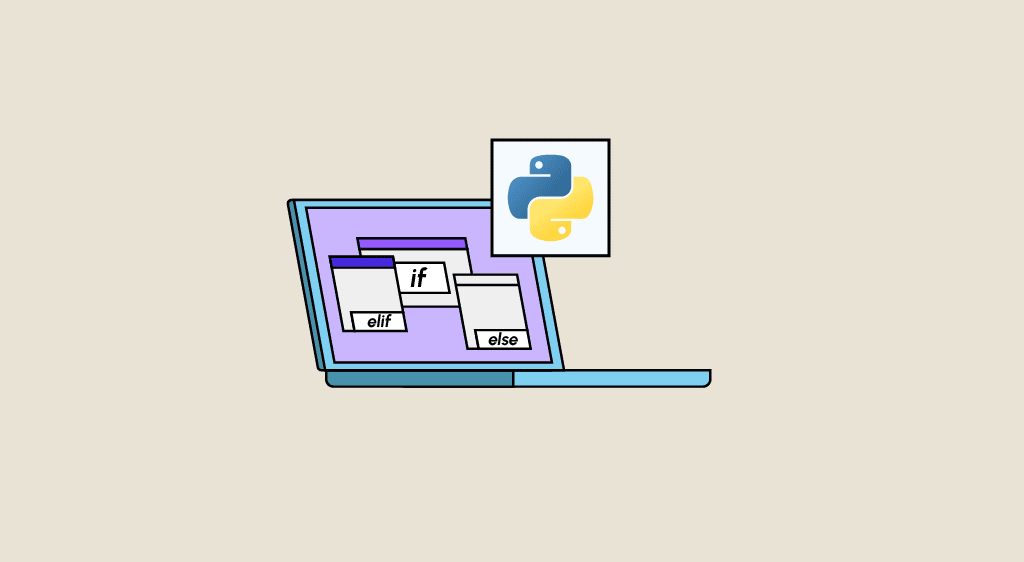Python If Else, and Elif are conditional statements that allow a program to execute code if certain conditions are met. This decision-making system is crucial for programmers, especially in the field of Data Science. Discover everything you need to know about the four forms of conditional statements in Python and how to undergo training to master this language.
In everyday life, each of our actions is based on the decisions we make. Therefore, all our activities depend on our decisions.
In software programming, the concept of decision-making is essential. It allows code to be executed when a specific condition is met.
In the Python language, decision-making relies on conditional statements. There are four forms: if, if-else, nested if, and if-elif-else.
Python If Else and conditional statements
In software programming, most large projects require controlling the program’s execution flow and executing specific sets of statements only when a condition is met. Otherwise, another set of statements must be executed.
Conditional statements are also known as decision-making statements. They are used to execute a specific block of code if the given conditions are true or false.

What is a Python If statement?
The Python “If” statement is one of the most commonly used conditional statements in software programming. It determines whether certain statements should be executed or not.
The “If” statement allows Python code to be executed if a condition is met. It uses the keyword “If” followed by the condition to be satisfied. The programmer also specifies the action to be taken if the condition is met.
The condition is checked, and the code within the “If” block is executed if it is true. Otherwise, the code within the “If” block is not executed, and the statement after the “If” statement is executed. In both cases, any code outside of the “If” statement is evaluated by default.
What is the Python If else statement?
The Python If-else statement is used to execute both the true and false parts of a condition. If the condition is true, the code within the “If” block is executed. If the condition is false, the code within the “Else” block is executed.
The test expression is checked, and the statements within the body of the “If” block are executed. Statements below the “If” block are then executed.
If the test expression results in false, the statements within the “Else” block are executed. Statements below the “If-else” block are then executed.
The “Else” block will only be executed if the conditions become false. The actions within this block are performed when the conditions are not true.
It’s important to note that Python uses indentation for both blocks to define the scope of the code. Other programming languages typically use curly braces instead.

What is the Nested IF declaration?
When an “If” or If Else statement is present within another “If” or “If-else” block, it is called a “Nested IF” statement.
This situation arises when it’s necessary to filter a variable multiple times and check multiple conditions.
In the context of a Nested IF statement, indentation is crucial for defining the scope of each statement.
The number of possible nestings is unlimited, but each nesting reduces program optimization and makes it more complex to read and understand. Therefore, it’s advisable to minimize the number of nestings.
What is the Python If-Elif-Else statement?
The “If” and If-else statements are useful for binary situations. In cases with multiple conditions, the “if-elif-else” statement is used.
First, the condition of the “If” statement is checked. If it is false, the “Elif” statement is evaluated.
If the condition is also false, the “Else” statement is evaluated.
In Python, the “Elif” statement is used to check multiple conditions if one condition is false. It’s similar to the “Python If Else” statement, but the difference is that “Elif” evaluates multiple conditions, unlike “Else.”
To test multiple expressions, you can use a chain of “Elif” statements. This is called an “Elif ladder.” The conditions in the “If” statement are checked by the controller, and the set of statements in that block is executed if they are satisfied.
Otherwise, the controller moves to the first “Elif” block to evaluate its conditions. The process continues for all the “Elif” statements, and if all the “If” and “Elif” conditions are evaluated as false, the “Else” block is executed.

How can I learn Python?
Mastery of Python is a highly sought-after skill in the business world. This programming language is the most widely used in software development, Data Science, and Machine Learning.
To learn how to wield Python and its subtler concepts like conditional statements, you can choose DataScientest. All our Data Science courses start with a dedicated module on Python programming.
You will be introduced to the fundamentals of Python, as well as its key Data Science libraries such as NumPy and Pandas. Through the other modules in this curriculum, you will explore Machine Learning, DataViz, Big Data databases, and Business Intelligence.
Our training programs allow you to obtain a certificate from Mines ParisTech PSL Executive Education, validate block 3 of the “Artificial Intelligence Project Manager” certification recognized by the state, and take the exams for Microsoft Azure and Amazon Web Services industrial certifications.
At the end of the program, you will have all the skills required to work with Python and pursue careers in Data Science. Among our alumni, 80% found employment immediately after completing the training.
Furthermore, our courses are eligible for different funding options depending on the country you live in. Don’t miss out and discover DataScientest!
You now have a better knowledge about Python “If” and conditional statements.
For more information on the subject, check out our complete guide on the Python language and our guide on Python Virtualenv.










